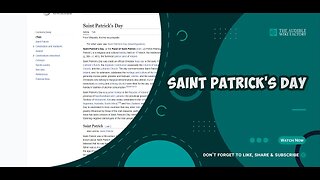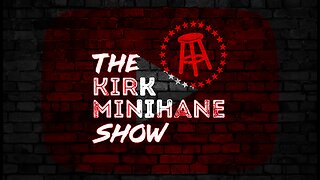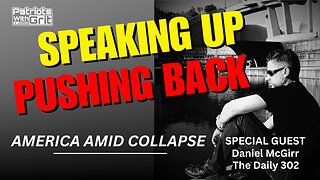Charles I was King of England, Scotland, and Ireland from 27 March 1625 until his execution in
Charles I was King of England, Scotland, and Ireland from 27 March 1625 until his execution in 1649. He was born into the House of Stuart as the second son of King James VI of Scotland, but after his father inherited the English throne in 1603, he moved to England, where he spent much of the rest of his life. He became heir apparent to the kingdoms of England, Scotland, and Ireland in 1612 upon the death of his elder brother, Henry Frederick, Prince of Wales. An unsuccessful and unpopular attempt to marry him to the Spanish Habsburg princess Maria Anna culminated in an eight-month visit to Spain in 1623 that demonstrated the futility of the marriage negotiation. Two years later, he married the Bourbon princess Henrietta Maria of France.
After his 1625 succession, Charles quarrelled with the English Parliament, which sought to curb his royal prerogative. He believed in the divine right of kings, and was determined to govern according to his own conscience. Many of his subjects opposed his policies, in particular the levying of taxes without parliamentary consent, and perceived his actions as those of a tyrannical absolute monarch. His religious policies, coupled with his marriage to a Roman Catholic, generated antipathy and mistrust from Reformed religious groups such as the English Puritans and Scottish Covenanters, who thought his views too Catholic. He supported high church Anglican ecclesiastics and failed to aid continental Protestant forces successfully during the Thirty Years' War. His attempts to force the Church of Scotland to adopt high Anglican practices led to the Bishops' Wars, strengthened the position of the English and Scottish parliaments, and helped precipitate his own downfall.
From 1642, Charles fought the armies of the English and Scottish parliaments in the English Civil War. After his defeat in 1645 at the hands of the Parliamentarian New Model Army, he fled north from his base at Oxford. Charles surrendered to a Scottish force and after lengthy negotiations between the English and Scottish parliaments he was handed over to the Long Parliament in London. Charles refused to accept his captors' demands for a constitutional monarchy, and temporarily escaped captivity in November 1647. Re-imprisoned on the Isle of Wight, he forged an alliance with Scotland, but by the end of 1648, the New Model Army had consolidated its control over England. Charles was tried, convicted, and executed for high treason in January 1649. The monarchy was abolished and the Commonwealth of England was established as a republic. The monarchy was restored to Charles's son Charles II in 1660.
EARLY LIFE
The second son of King James VI of Scotland and Anne of Denmark, Charles was born in Dunfermline Palace, Fife, on 19 November 1600. At a Protestant ceremony in the Chapel Royal of Holyrood Palace in Edinburgh on 23 December 1600, he was baptised by David Lindsay, Bishop of Ross, and created Duke of Albany, the traditional title of the second son of the king of Scotland, with the subsidiary titles of Marquess of Ormond, Earl of Ross and Lord Ardmannoch.
James VI was the first cousin twice removed of Queen Elizabeth I of England, and when she died childless in March 1603, he became King of England as James I. Charles was a weak and sickly infant, and while his parents and older siblings left for England in April and early June that year, due to his fragile health, he remained in Scotland with his father's friend Lord Fyvie appointed as his guardian.
By 1604, when Charles was three-and-a-half, he was able to walk the length of the great hall at Dunfermline Palace without assistance, and it was decided that he was strong enough to journey to England to be reunited with his family. In mid-July 1604, he left Dunfermline for England, where...
LINK TO ARTICLE: http://en.wikipedia.org/wiki/Charles_I_of_England
TAGS: Charles I of England, Children of James VI and I, Heads of government who were later imprisoned, High Stewards of Scotland, Christian royal saints, Publicly executed people, Burials at St George's Chapel Windsor Castle, People executed under the Interregnum (England) by decapitation, People executed under the Interregnum (England) for treason against England, Executed British people, Dethroned monarchs, Executed monarchs, Monarchs taken prisoner in wartime, People of the English Civil War, People from Dunfermline, Knights of the Garter, Peers of England created by James I, Peers of Scotland created by James VI, Earls of Ross, Dukes of York, Dukes of Rothesay, Dukes of Cornwall, Dukes of Albany, House of Stuart, Princes of Wales, Princes of Scotland, Princes of England, English pretenders to the French throne, Anglican saints, Protestant monarchs, 17th-century Scottish peers
#GeneralKnowledge #AudibleWikiFactory #Audible #Wikipedia #CharlesIofEngland
-
 34:34
34:34
The Audible Wiki Factory
1 year agoSaint Patrick's Day, or the Feast of Saint Patrick, is a religious and cultural holiday held on
724 -
 25:27
25:27
Degenerate Plays
11 hours agoThe Microtransaction Master - Call Of Duty Modern Warfare Remastered : Part 3
4.11K2 -
 21:03
21:03
MYLUNCHBREAK CHANNEL PAGE
14 hours agoOld World Minnesota?
8.51K18 -
 5:49:05
5:49:05
Akademiks
20 hours agoDrake Next Move - Whats next?? Did Lil Baby Listen to Me? Diddy and Family Preparing for Indictment?
62.6K31 -
 1:56:06
1:56:06
TimcastIRL
1 day agoTrump Raises RECORD $52.8 MILLION In One Day, Bonus Uncensored Show w/Laura Loomer | Timcast IRL
83.5K362 -
 23:19
23:19
Scammer Payback
4 days agoWe Created the First Ever 𝗔𝗡𝗧𝗜-𝗦𝗖𝗔𝗠 Call Center
209K246 -
 1:11:09
1:11:09
LFA TV
22 hours agoTRUMP GUILTY…OF LOVING AMERICA! Ft. Hayley Caronia & Vish Burra | LAST CALL 6.1.24 8PM EST
72.2K32 -
 1:02:02
1:02:02
The Kirk Minihane Show
14 hours ago420 Show
50.3K2 -
 1:06:35
1:06:35
Patriots With Grit
13 hours agoSpeaking Up, Pushing Back | Daniel McGirr
46.4K6 -
 56:19
56:19
Total Horse Channel
2 days ago2024 Buckeye Reining Series | Saturday Night | 7:30 pm EST
54K5